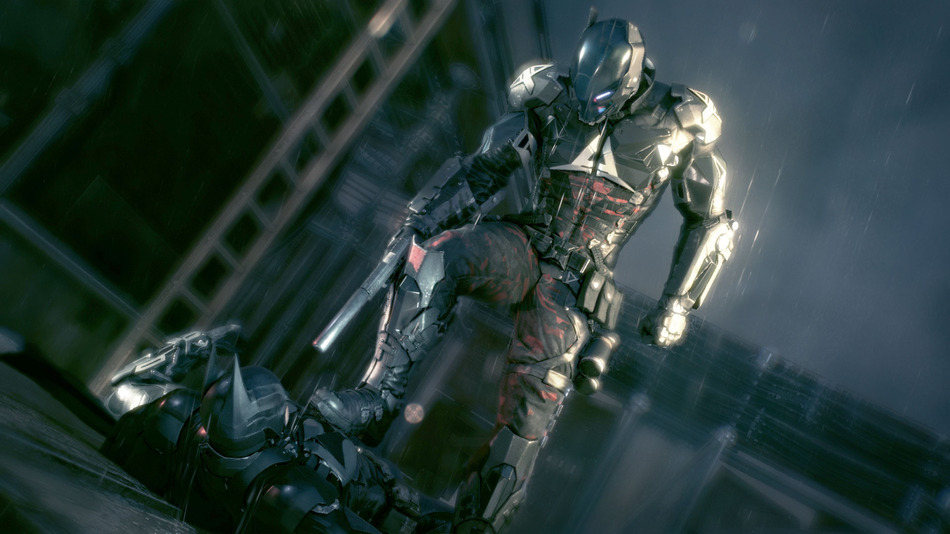**Spoiler Warning: This post contains a key spoiler regarding Arkham City's ending and another one for Arkham Knight from the first quarter of the game that ties into that ending.**
Franchises typically include a dark middle chapter, but Rocksteady's Batman trilogy saves most of the doom and gloom for its finale. Batman: Arkham Knight begins with a strikingly detailed cremation and then quickly transitions to terror and murder as its central antagonist Scarecrow infects Gotham. On some level it's familiar territory for The Caped Crusader, but the numerous threats feel more sinister in Arkham Knight. It's as if Rocksteady took notes from film director Christopher Nolan and decided to double down on themes of death and regret. As I continue to play the game, that darkness stands out as one of its defining characteristics.
The first two Arkham games from Rocksteady Studios featured dark themes and twisted characters, but Arkham Knight is the first in the series to receive a 'M' rating from the ESRB. Batman regularly encounters violence on his quests to save Gotham, and Arkham Knight increases the frequency and impact of that violence. There's more blood and notable hints of torture in the game, both of which raise the stakes. Batman works hard to protect the city of Gotham from such heinous acts, and seeing that violence in action on a more visceral level demoralizes The Dark Knight and in turn emotionally resonates with the player.

The psychological aspects of Arkham Knight's narrative also tout more mature themes. Scarecrow has a knack for preying on individual's fears, and Batman himself is no different. Players are constantly reminded of those fears by the Joker, who appears in front of Batman at key moments in the story. Although Joker died in Arkham City, Batman is haunted by visions of the maniacal villain. He reminds “Bats” of his failures and frequently tells him that he can't save everyone. The thing is, he's right this time around. Batman can't save everyone in Arkham Knight, and he doesn't always succeed. The visions of Joker reinforce Batman's feelings of doubt and regret in the game.
The darkness in Arkham Knight also permeates through the game's visuals in some less-than-obvious ways. The conclusion of Rocksteady's Batman trilogy marks the developer's debut on current-gen consoles, and it shows in the opening moments of the game. The visual upgrade from Arkham City to Arkham Knight makes a difference in that it allows Gotham to come alive in ways that the previous two Arkham games couldn't do because of technical limitations. The impressive visuals also emphasize the dirt and grime of Gotham now that it's in decay. It feels like there's a perpetual downpour as Batman travels around Gotham, and the beautiful neon lights are juxtaposed by dilapidated city streets. Gotham is clearly a city in ruins.
One of the reasons I enjoy the Batman universe so much is because it's not afraid to delve into the darker aspects of society and what that means for the seemingly unstoppable superhero. Rocksteady Studios understands that appeal, and Arkham Knight's emphasis on an unsettling and often macabre tone adds to the finality of the Batman's efforts to save Gotham. Let's not forget the game opens with the line, “This is how the Batman died.” I have yet to beat the game so I don't know if that actually happens, but Arkham Knight is one of the few examples of a game in which I wouldn't be surprised to see the protagonist die. Sorry, Bats.








